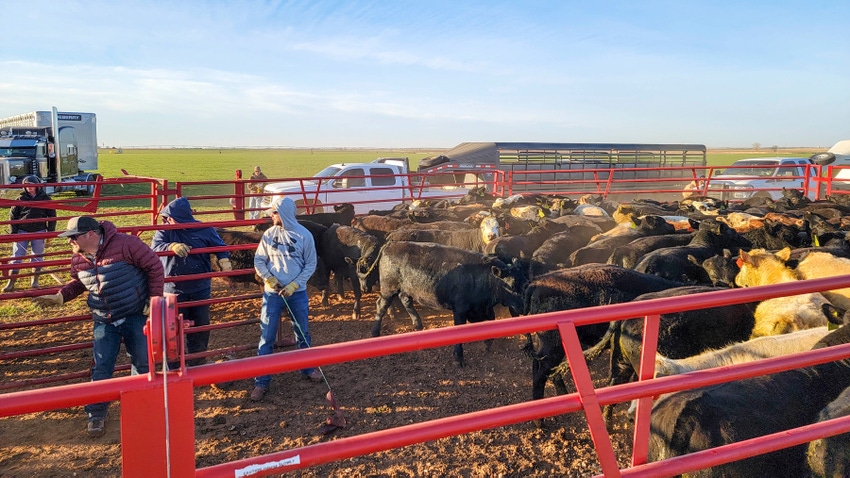Proactive Defense: Bagley Risk Management Techniques
Wiki Article
Comprehending Livestock Risk Defense (LRP) Insurance Policy: A Comprehensive Guide
Browsing the realm of livestock threat protection (LRP) insurance can be an intricate endeavor for many in the farming market. This kind of insurance policy supplies a safeguard versus market changes and unpredicted conditions that could impact animals producers. By recognizing the ins and outs of LRP insurance policy, producers can make enlightened choices that may secure their operations from economic threats. From exactly how LRP insurance policy functions to the different insurance coverage options available, there is much to discover in this thorough overview that could possibly shape the means animals manufacturers approach threat administration in their organizations.

Just How LRP Insurance Works
Periodically, understanding the auto mechanics of Livestock Threat Security (LRP) insurance can be intricate, however damaging down exactly how it works can supply clarity for farmers and herdsmans. LRP insurance coverage is a danger monitoring tool made to secure animals producers versus unanticipated cost declines. It's essential to keep in mind that LRP insurance policy is not a profits assurance; instead, it concentrates exclusively on cost danger defense.Qualification and Protection Options

When it concerns coverage options, LRP insurance provides manufacturers the versatility to select the protection degree, protection duration, and endorsements that best match their threat monitoring demands. Coverage degrees typically vary from 70% to 100% of the anticipated ending value of the insured livestock. Manufacturers can likewise pick coverage periods that align with their manufacturing cycle, whether they are insuring feeder livestock, fed cattle, swine, or lamb. Recommendations such as cost threat defense can additionally customize insurance coverage to safeguard against negative market fluctuations. By understanding the eligibility requirements and coverage choices available, livestock manufacturers can make enlightened choices to handle danger properly.
Benefits And Drawbacks of LRP Insurance Coverage
When examining Animals Risk Security (LRP) insurance, it is necessary for animals manufacturers to evaluate the advantages and downsides inherent in this risk management tool.
Among the key advantages of LRP insurance coverage is its capacity to give protection against a decrease in livestock rates. This can aid safeguard producers from economic losses resulting from market variations. Furthermore, LRP insurance offers a level of flexibility, enabling manufacturers to personalize coverage levels and policy periods to suit their details needs. By securing an assured price for their livestock, producers can much better handle risk and plan for the future.
Nonetheless, there are also some disadvantages to think about. One restriction of LRP insurance is that it does not secure versus all kinds of risks, such as illness outbreaks or natural disasters. Additionally, costs can sometimes be costly, especially for manufacturers with large livestock herds. It is vital for producers to thoroughly evaluate their individual risk direct exposure and economic situation to determine if LRP insurance policy is the appropriate danger management device for their procedure.
Comprehending LRP Insurance Coverage Premiums

Tips for Taking Full Advantage Of LRP Advantages
Optimizing the benefits of Livestock Risk Defense (LRP) insurance coverage needs strategic planning and positive danger management - Bagley Risk Management. To take advantage of your LRP coverage, think about the complying with pointers:Routinely Evaluate Market Conditions: Stay informed concerning market fads and price variations in the livestock market. By keeping an eye on these factors, you can make enlightened choices concerning when to buy LRP protection to safeguard versus potential losses.
Establish Realistic Coverage Levels: When picking coverage levels, consider your production expenses, market price of animals, and potential dangers - Bagley Risk Management. Setting realistic coverage levels ensures that you are appropriately secured without paying too much for unnecessary insurance policy
Diversify Your Protection: Instead of counting exclusively on LRP insurance policy, take into consideration diversifying your danger management approaches. Incorporating LRP with other risk administration devices such as futures agreements or alternatives can supply extensive insurance coverage versus market unpredictabilities.
Testimonial and Change Protection On a regular basis: As market conditions change, periodically review your LRP insurance coverage to ensure it straightens with your present risk exposure. Changing find out protection levels and timing of acquisitions can aid maximize your threat security technique. By following these suggestions, you can optimize the advantages of LRP insurance policy and secure your livestock procedure against unpredicted dangers.
Final Thought
Finally, livestock threat defense (LRP) insurance coverage is a valuable tool for farmers to handle the financial risks related to their livestock operations. By understanding exactly how LRP functions, qualification and insurance coverage alternatives, in addition to the pros and disadvantages of this insurance policy, farmers can make informed choices to safeguard their incomes. By meticulously thinking about LRP costs and applying techniques to optimize advantages, you can find out more farmers can alleviate possible losses and make sure the sustainability of their operations.
Livestock manufacturers interested in acquiring Animals Risk Protection (LRP) insurance coverage can check out a variety of qualification criteria and protection options tailored to their details animals procedures.When it comes to protection options, LRP insurance offers producers the flexibility to choose the protection degree, coverage period, and recommendations that ideal match their danger administration requirements.To comprehend the complexities of Livestock Danger Protection (LRP) insurance coverage completely, recognizing the variables affecting LRP insurance policy costs is important. LRP insurance coverage premiums are established by different elements, consisting of the insurance coverage level picked, the expected price of animals at the end of the insurance coverage period, the kind of animals being insured, and the size of the insurance coverage period.Evaluation and Adjust Protection Consistently: As market conditions transform, periodically review your LRP coverage to ensure it straightens with your present threat exposure.
Report this wiki page